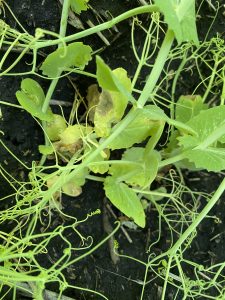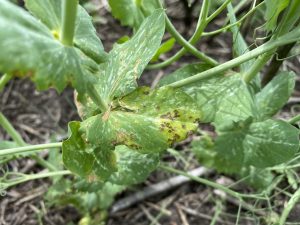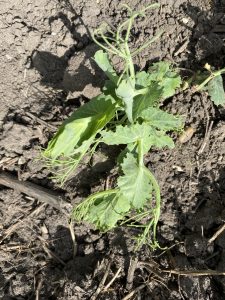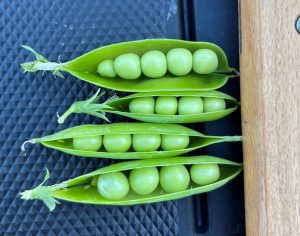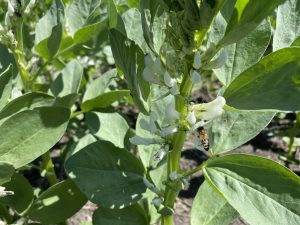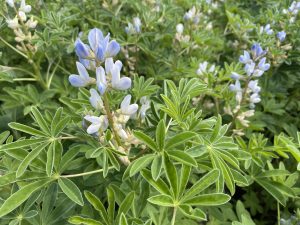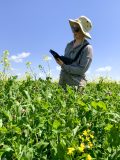 JULY 20, 2022
JULY 20, 2022
- Crop and Scouting Update
- Assessing Soybean Nodulation
- Soybean Foliar and Stem Diseases and On-Farm Network Fungicide Results
- Dry Bean Foliar Fungicide Decisions
- Pea Foliar Fungicide Second Application Decisions
- Scouting for Pea Aphids
- On-Farm Network Update: Living the Data Collection Dream
- Upcoming Events:
- July 26: Prairies East Sustainable Agriculture Initiative Inc. (PESAI) Field Day at Arborg.
- July 26: Combine College at Dauphin.
- July 27: Parkland Crop Diversification Foundation (PCDF) Field Day at Roblin.
- July 28: Combine College at Portage la Prairie.
- July 29: 4R Nitrogen Management Field Tour – Manitou area
- August 3: Dry Bean Tour at the Morden Crop Development Centre (AAFC-Morden).
- August 9: Canada-Manitoba Crop Diversification Centre (CMCDC) Field Day at Carberry.
Listen to the Bean Report:
Crop and Scouting Update
- Soybeans are at R1 (beginning bloom) to R3 (early pod) stages.
- Assess soybean nodulation ahead of pod filling stages to ensure your inoculation strategy was successful.
- Soybean aphids have been reported in the central region at low, sporadic levels. Monitor for this pest from R1 to R5. In non-outbreak years, soybean aphid populations are suppressed by natural enemies like ladybeetles and their larvae, hoverfly larvae, green lacewings, parasitic wasps and more.
- Bacterial blight symptoms are present in fields that have had hail or strong storms. Septoria brown spot is showing up on the lower leaves in some fields.
- Grasshopper defoliation thresholds from flowering to pod fill in soybeans are 15% defoliation.
- Hail continues to be reported in some ares. Research from the soybean and pulse agronomy lab has determined that soybeans are most sensitive to leaf loss during R4 and R5. Yield loss varies with the amount of leaf defoliation (Table 1), ranging from 4-62% yield loss at R3 (early pod) and 13-75% yield loss at R4 (full pod). If less than a third of the canopy has been damaged or shredded, then yield loss is expected to be below 13%.

- Field peas range from V11-12 (11-12 true leaf nodes) to R4 (full pod) stages.
- Signs of Mycosphaerella (Ascochyta) blight are common in the lower canopy. Most pea fields have received a fungicide application with some farmers considering a second application. The Fungicide Decision Worksheet for Managing Mycosphaerella Blight may be used to aid in first or second fungicide application decisions.
- Bacterial blight and downy mildew foliar diseases are also present in some pea fields.
- Pea aphids are common. Check plant tips for pea aphids, and if economic thresholds are exceeded, consider an insecticide app when 50% of plants have produced young pods.
- Dry beans are at flower bud to R1 (beginning bloom) stages.
- Symptoms of the bacterial blight complex are present in fields that have had storm damage or mechanical damage.
- Fungicide application timing in dry beans is at the start of flowering to protect plants from the spread of white mould. Fungicides for white mould are preventative, meaning they much be applied before disease is present. Rainfall leading up to and during flowering are strong predictors of white mould disease development. Use the Fungicide Decision Worksheet for Managing White Mould in Dry Beans to determine if a fungicide application may be warranted. Read more about making foliar fungicide decisions here.
- Dr. Michael Wunsch, NDSU, has summarized NDSU research on optimizing fungicide application timing for improved management of white mould in different bean market classes.
- Grasshopper defoliation thresholds from flowering to pod fill in dry beans are 15% defoliation.
- Faba beans range from R3 (50% bloom) to R4 (flat pod) stages.
- Blister beetles are present in several fields, but defoliation has been minimal. Blister beetles occur in patches in the field, and often do not feed for long before moving on. The larvae of the grey and black Epicauta blister beetles eat grasshopper eggs.
- Monitor faba beans for pea aphids. The economic threshold for control is 34-50 aphids/main stem, this threshold provides a 7-day lead time before aphid populations are expected to reach the economic injury level of 96-112 aphids/plant. Faba beans rely heavily on pollinators, so make sure insecticide applications are warranted and applied in such a way to minimize the effect on pollinators.
- Several foliar diseases infect faba beans. Chocolate spot is the disease of main concern, and appears are small brown to red coloured lesions on leaves. Under warm, humid conditions, lesions expand and turn grey. Fungicide applications are made during flowering to protect yield.
Assessing Soybean Nodulation

- Assess nodulation on every field, every year, regardless of inoculant strategy or field history.
- R1 (beginning bloom) is the ideal time to assess soybean nodulation to determine if the crop has enough nodules to supply sufficient nitrogen for pod fill at R4 (full pod) and R5 (beginning seed).
- Gently dig up 5-1o plants from 2-3 different areas of the field.
- Soak roots in water to remove soil, as nodules may easily be stripped from roots.
- Count the number of nodules per plant. If there is a lot of variability, dig up more plants for an accurate field-scale estimate. Soybean plants need at least 10 nodules per plant, regardless of nodule size, to reach 90% of maximum yield.
- Cut open a few nodules to check for the pink-red colour signifying that they are actively fixing nitrogen.
- Also assess general root health and growth for signs of root rot or compaction.
Soybean Foliar and Stem Diseases
Bacterial blight and Septoria brown spot are the two most common foliar diseases infecting soybeans annually, found in 67% and 81% of fields in 2021, respectively. Severity of these two foliar diseases is often low and they are not expected to be yield limiting in most cases. Downy mildew is another common foliar disease, which is more prevalent during wet growing seasons.
- Bacterial blight: brown, angular lesions surrounded by a yellow halo. Often present in the mid to upper canopy. Fungicides will not control this disease.
- Septoria brown spot: brown freckles or small lesions. Present in the lower to mid canopy.
- Downy mildew: pale green to light yellow lesions on the upper sides of leaves, on the leaf underside the lesion may have grey fungal growth under humid growing conditions.
Stem diseases generally have a greater impact on yield than foliar diseases and are more common to find in August. In recent disease surveys, stem disease prevalence and incidence has been low with previous dry growing seasons. Northern stem canker and white mould are the most common stem diseases found in soybeans. Northern stem canker is relatively new to Manitoba, and has become more common with more soybean growing history in Manitoba.
- White mould: infections begin at nodes along the main stem. Wilted plants may be spotted from afar, within a humid canopy may find white mycelial growth and black sclerotia bodies later in the season. Cool, wet conditions throughout July and August favour white mould.
- Northern stem canker: small, reddish-brown lesions at the base of a branch or petiole in the lower third of the canopy after flowering. Lesions expand to form sunken cankers with reddish margins. May be confused with Phytophthora root and stem rot.
- Phytophthora root and stem rot: late infection appears as a chocolate brown lesion on the stem that extends upwards from the soil line. If roots are rotten, suspect PRR. If roots appear healthy, northern stem canker may be suspected.
- Pod and stem blight: distinct lines of raised, black dots on infected stems and pods.
- Anthracnose: reddish-brown, irregularly-shaped blotches on leaves and stems. Black fungal bodies develop in these blotches later in the season.
On-Farm Evaluation of Soybean Foliar Fungicides
Since 2014, 66 replicated and randomized field-scale trials have been conducted through the On-Farm Network (OFN) to evaluate foliar fungicide in soybeans. The main goal for fungicide application in soybeans is to control white mould.
Across the OFN trials, there were no soybean yield responses to fungicide 83% of the time (55/66 trials), statistically significant yield increases 17% of the time (11/66 trials) and economical yield increases only 9% of the time (6/11 significant yield trials), where the yield bump was great enough to cover the cost of fungicide.
How do you predict the year where you will see a return on investment? Determine the likelihood of disease development each season and in each field, since profitability depends on white mould presence. Disease is likely to develop if conditions are wet and cool (< 21°C) leading up to flowering, if your field has a history of white mould and if there are signs of disease development while scouting (e.g., apothecia on the soil surface ahead of flowering).
Dry Bean Foliar Fungicide Decisions
- Foliar fungicides to control white mould (Sclerotinia) are preventative, meaning they are applied before disease symptoms are visible. Fungicides can also offer control or suppression of anthracnose, powdery mildew and rust, depending on the product. However, these diseases are less frequent and less severe in Manitoba-grown dry beans.
- White mould prevalence and severity in dry bean fields have been low for the last four years (2016 – 2021). Whether fungicide applications will be warranted this season is dependent on yield potential of the crop, the amount of precipitation received in July around flowering and if recent, previous broadleaf crops in the field or vicinity have had high white mould (Sclerotinia) levels, which will contribute more spore-producing sclerotia bodies to the area.
- If warm, humid conditions persist throughout flowering and pod development, consider a second fungicide application 7 to 14 days after the first.
- The Fungicide Decision Worksheet for Managing White Mould in Dry Beans (also available in the Bean App) can help determine the risk of disease development, based on environmental and agronomic factors, and aid in the decision of whether or not to apply a fungicide.
- According to recent NDSU research, the best predictors of optimum fungicide application timing were percent canopy closure and the percent of plants with one or more initial pods (pin-bean pods when first pods are 0.5-1″ long).
- Pinto beans: When the canopy was at or near closure (average ≥ 95% of the ground covered) when the first pin-shaped pods were developing, white mold management and pinto bean yield were optimized when fungicides were applied when approx. 15% of plants had initial pin-shaped pods. When the canopy was open (average < 95% of the ground covered) when the first pin-shaped pods were developing, white mold management and dry bean yield were optimized when fungicide applications were delayed until 50% of the plants had initial pin-shaped pods. The growth stage which optimized fungicide performance was the same irrespective of whether one fungicide application or two sequential applications were made.
- Black beans and navy beans: When the canopy was open (average < 95% closure) when the first pin-shaped pods were developing, the response to fungicides was very similar irrespective of whether applications were made at the first appearance of pin-shaped pods or delayed until 30-50% of plants had initial pods. However, yield gains in individual studies were highly variable when fungicide applications were made after 20% of plants had initial pods, indicating that making applications when more than 20% of plants had initial pods is only optimal when conditions do not favor infection by the Sclerotinia/white mould pathogen.
Pea Foliar Fungicide Second Application Decisions
- In wet, humid years a second application of fungicide may be necessary to control Mycosphaerella (Ascochyta) blight. To determine if a second fungicide application is warranted consider the factors that are favourable for disease development and use the Fungicide Decision Worksheet for Managing Mycosphaerella Blight.
- Factors that favour disease development and a second application of fungicide: dense crop canopy and vigourous growth, persistent leaf wetness and humidity, rain showers in the 5-day weather forecast and if disease symptoms are progressing into the mid to upper crop canopy.
- If a second application is needed, apply 10 to 14 days after the first application, using different modes of action. Select a product that has more fungicide groups than a group 11 alone to manage any resistant populations of Mycosphaerella blight.
- Consider the pre-harvest interval (PHI) of the fungicide product. Pea days to maturity range from 93 to 95 days, with PHIs of fungicide products ranging anywhere from 1 to 32 days. Once peas reach the R4 (full pod) stage, fungicide applications are generally no longer recommended. At this stage, peas are within the 30-day PHI of several products and disease is no longer expected to be yield-limiting.

Pea and Soybean Aphids
Pea Aphids
- Pea aphids overwinter in Manitoba, and also blow in from the states.
- Scout at 50-75% flower. Check 5 plant tips (top 8″) or take 10 sweeps per stop.
- The threshold of 2 aphids/plant tip or 7/sweep is equivalent to 5% yield loss at early pod formation and elongation stages.
- If thresholds are exceeded, applications at R3 (when 50% of plants have young pods) have been more effective than earlier or later applications. With earlier applications, the field may be recolonized within two weeks and a second spray may be necessary.
Soybean Aphids
- Soybean aphids generally do not overwinter in Manitoba and populations blow in from the south. Most years, soybean aphids remain low, but in some years like in 2017 and 2011, soybean aphid outbreaks occur.
- Scout from R1 to R5. Pod formation and elongation stages are the most susceptible to aphid feeding. Count aphids per plant. Soybean aphids are not easily dislodged from plants, so sweep nets do not capture the population.
- The economic threshold is 250 aphids per plant and increasing.
- This requires two field visits: 1) to assess the population numbers and 2) to determine if the population is increasing, staying consistent or decreasing. If the population is not increasing, natural enemies may be managing the aphid population. If the population is increasing, then natural enemy populations have been overwhelmed.
- This threshold provides a 7-day lead time before the population is expected to reach the economic injury level of 670 aphids/plant.
- Pyrethroid insecticides can cause flares in spider mite populations.
Dry Bean Tour at AAFC-Morden on August 3, 2022, 9:00 – 11:30 a.m.
- 9:00 a.m. Arrive, Welcome and Introduction – Cassandra Tkachuk and Laura Schmidt, MPSG
- 9:30 a.m. Bacterial Blight and White Mould Pathology – Dr. Ahmed Abdelmagid – AAFC – Morden
- 10:20 a.m. Applied Dry Bean Research – Kristen P. MacMillan, U of M
- 10:40 a.m. Regional Variety Trials – Dennis Lange, Manitoba Agriculture
- 11:00 a.m. Dry Bean Breeding Objectives – Dr. Anfu Hour, AAFC – Morden
- 11:30 a.m. Farewell
Here is a google map link for directions to the site.
Combine College at Dauphin, July 26 and Portage la Prairie, July 28
Combine settings play a big role in reducing harvest losses. Learn how to adjust settings to maximize what makes it into the bin at Combine College. Session options include John Deere, Case IH, New Holland and Managing Harvest Losses and General Combine Prep.
- July 26 – Dauphin, MB – Rotary Arena & DMCC Fair Grounds
- July 28 – Portage la Prairie – Stride Place
Register here by end of day Wednesday, July 20!
On-Farm Network Update: Living the Data Collection Dream
The last two weeks have been a whirlwind of activity in the On-Farm Network (OFN). July kicked off with pre-spray checks using the Fungicide Decision Worksheet for Managing Mycosphaerella Blight in Field Peas. The worksheet helps determine the necessity of fungicide applications – a highly useful tool to have on hand this season. The OFN team has also been busy evaluating field pea nodulation, checking staging in soybean row spacing trials to examine canopy closure and conducting plant counts at biological trials. The Agronomy Assistants have become champions at navigating thick field pea stands and will likely be signing up for hurdles at the next summer Olympics. Data continues to be collected and mosquitoes continue to be swatted. Just a week in the life with the OFN!










